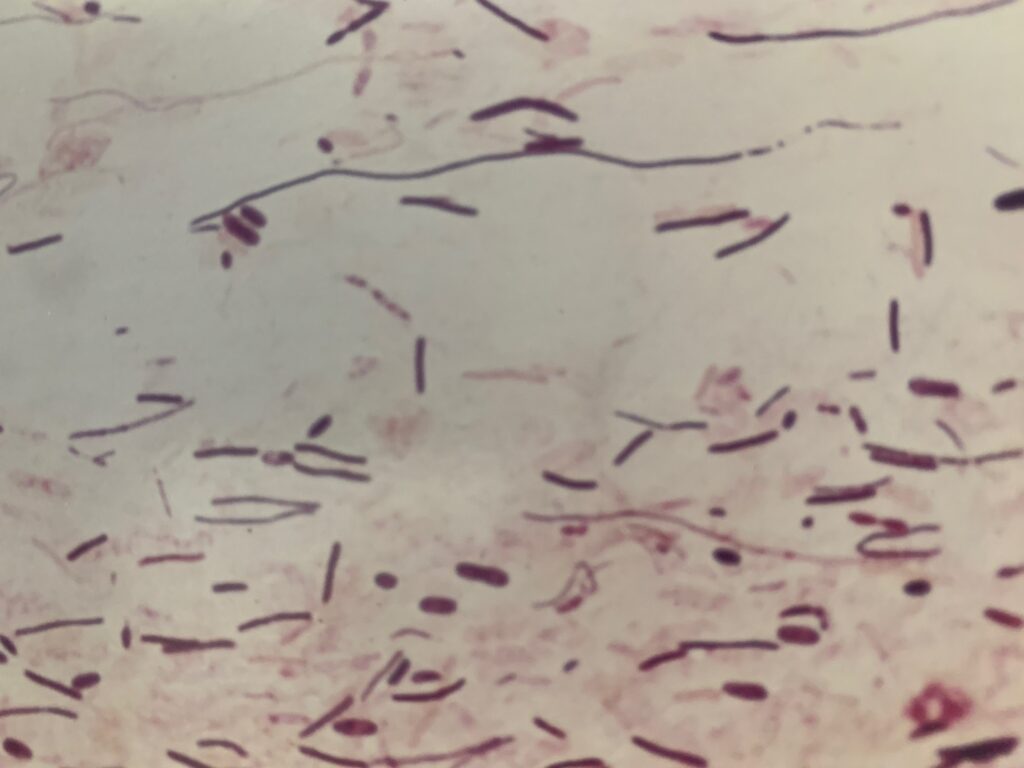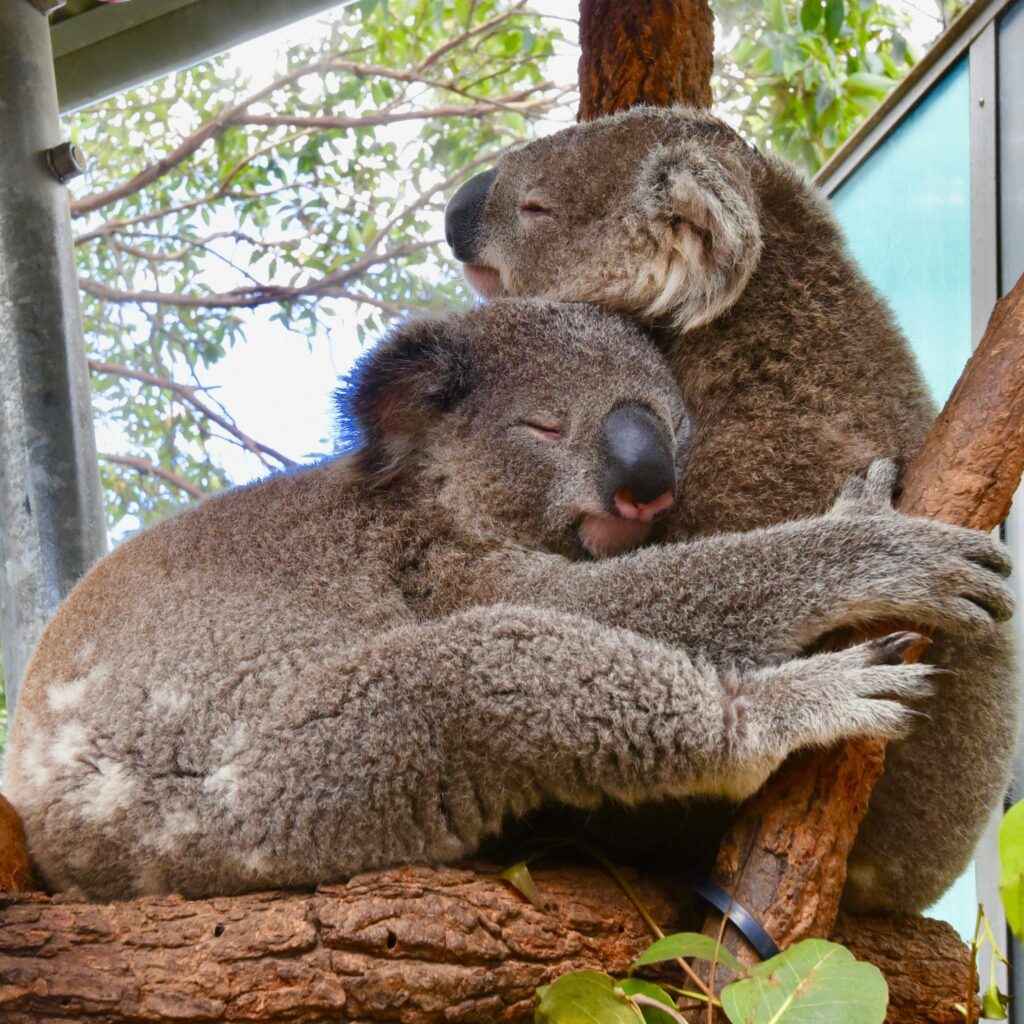Hello, and welcome back to part IV of “My Life with Koalas”. If you have just tuned in to this series, here is a brief recap:
To date, we marvelled at the life of Koalas, one of the most, if not the most, unique Australian animals. From the restricted lifestyle in trees, seldom getting to the ground, and their total dependence on Eucalyptus leaves, not just any leaves but only the leaves of particular species.
We took on the challenge of getting poo samples from koalas in trees to start looking at what possible purpose their 2 meters long caecum might serve. I started exploring whether there was anything special about the bugs and germs (the microflora) that lived in the koala’s gut.
In the last episode, we started looking at real caecal content from animals that had unfortunately been hit by cars and had to be euthanized. I highlighted that the biggest killers of koalas were dogs and cars, although from the first story, I wrote about koalas (here), habitat destruction probably claims more lives now.
We also looked briefly at the remarkable ‘magic sauce’ that is produced by mother koalas to prepare their babies for a solid leaf diet.
Tragedy Hits
Sometimes fate waves its fickle finger in life!
This happened to me early on in my Masters studies, that is best described as “WHO WOULD HSAVE THUNK IT!”
-
My supervisor passed away three months into my work
-
The University RETURNED the grant money that we received form a large multinational mining company, and
-
After the two-year period refused to extend my scholarship because there were no mitigating circumstances ?????
Suffice to say these events caused a few hiccups.
I was forced to look at other options linked to bacterial digestion and Eucalyptus, as these were the key elements of the koala work.
I spent over three months starting and stopping projects as they quickly became unworkable. I looked at termites, crickets, and even the large green Emperor gum caterpillar. Beautifully colored, it was nothing but a big green slug that served no researchable purpose as far as a thesis was concerned.
I gained support from a lecturer who was Jack’s good friend. I think he took pity on me, but that was O.K. because the Department allowed me to continue my work under his guidance. He was my savior!
After three months of wasted time, I finally found a way to get back to the task: “How does the caecum help the koala digest food?”
Start of the serious stuff
In other animals with a functional caecum, such as horses and rabbits, the caecum is populated by a diverse group of bugs that collectively digest food on behalf of the host. As we have mentioned, these bugs are sensitive to oxygen and quickly die when exposed to oxygen.
Unlike a normal intestine such as in humans, the caecum acts as a retention chamber, storing food for prolonged periods so that a select group of bugs that are specialists in decomposing complex plant parts (cellulose, pectin, and starch) into soluble sugars can act.
One of the curiosities about the koala gut environment and the microflora that potentially lived there, was the continual presence of Eucalyptus oils.
I can remember my mother swearing by Eucalyptus oil as an agent to kill bacteria, which has a proven scientific basis. The question on everyone’s lips was?
“How do the bugs in the gut survive all that Eucalyptus exposure?”
Eucalyptus oils certainly have a strong presence in the koala gut. When you dissect a koala, all the abdominal muscles are green, and there is a strong odour of Eucalyptus.

Keeping The Little Buggers Alive and Working Out What They Did
When researching bugs, you must keep them alive outside of their natural environment (in vitro) without changing their properties or abilities.
In this case, it meant developing media for them to grow on to a detectable size (a colony) that contained similar, alert levels of Eucalyptus oils and was also devoid of oxygen.
I literally had hundreds of different isolates that had to be characterized and hopefully identified. They also had to be placed onto new medium at regular intervals to keep them alive; it was a full-time job!
Identifying bugs and working out what they could do in those days was quite complicated. There were no fancy machines to do it; it was all done manually. I had several hundred isolates, all had to be run through up to 50 different individual tests. It was a detailed and methodical process.
Computers were also not what they are today. Programs had to be manually written, and this was quite a challenge for a non-tech person. Data also had to be entered manually into the program. That was about 15,000 data entries.
I vividly remember one night in the wee hours of the morning, sitting in the computer room punching in data, when the screen went black.
When I got it back, I found that I had lost the entire file.
I was so upset that I told the computer to get Stuffed.
The reply was priceless:
“Stuffe file not found”.
With that, I called it quits for the night and staggered out of the room, bleary-eyed from all the typing.
What Does It All Mean Alfie – How Far Did I Get?
For the reasons explained, what should have taken two years ended up taking just over four years. I can tell you that I only scratched the surface of what was happening. Here is the lay summary:
– The koala caecum has a healthy population of bugs – overvc10 billion /gram.
– There were similarities to the types of bugs found in other caecal animals, but also distinct differences.
– Unlike other animals the bugs in the koala caecum do not possess any special powers to digest complex foods and food does not spend a long time
in the caecum.
– Surprisingly, lower levels of Eucalyptus oils were found in the caecum compared to other parts of the digestive tract, perhaps suggesting that
they play a role in the detoxification of these toxic oils.
The koala and its gut microflora have evolved over hundreds of years to utilize a low-nutrient and toxic diet.
Unfortunately, because of all the delays and trauma, none of the work performed was ever published, and apart from a copy of this thesis sitting in an obscure section of a university library, it is a secret to the world.
Since my work, others have thankfully picked up looking at microbial digestion in the koala. Two things stand out from this subsequent work:
(i) It is a highly evolved relationship that provides the koala with enough nutrients to survive, albeit in an environment complicated by Eucalyptus oils.
(ii) The degree of dependency starts with producing the ‘magic sauce’ for infants to commence on a solid diet. It continues to change with their transition to different types of Eucalyptus leaves, even with their female koalas’ reproductive stages.
Fascinating animals that we still do not fully understand. They still hold a very special spot for me.
What will the future of the koala be?
Many say they are on the edge of becoming endangered species. In the final episode, I take a look at their future.
You Can Help:
I am writing this series in the hope of raising some money, which I will contribute to the Australian Koala Foundation. If you want to make a donation, the best way is to make a donation (cup of coffee) at Ko-fi. I love coffee. I don’t know if koalas do, but we can change it to Eucalyptus tea!!!!
Last Episode (5) next month: How Much Can a Koala Bear?
Till next time, thanks for reading,
Calvin


